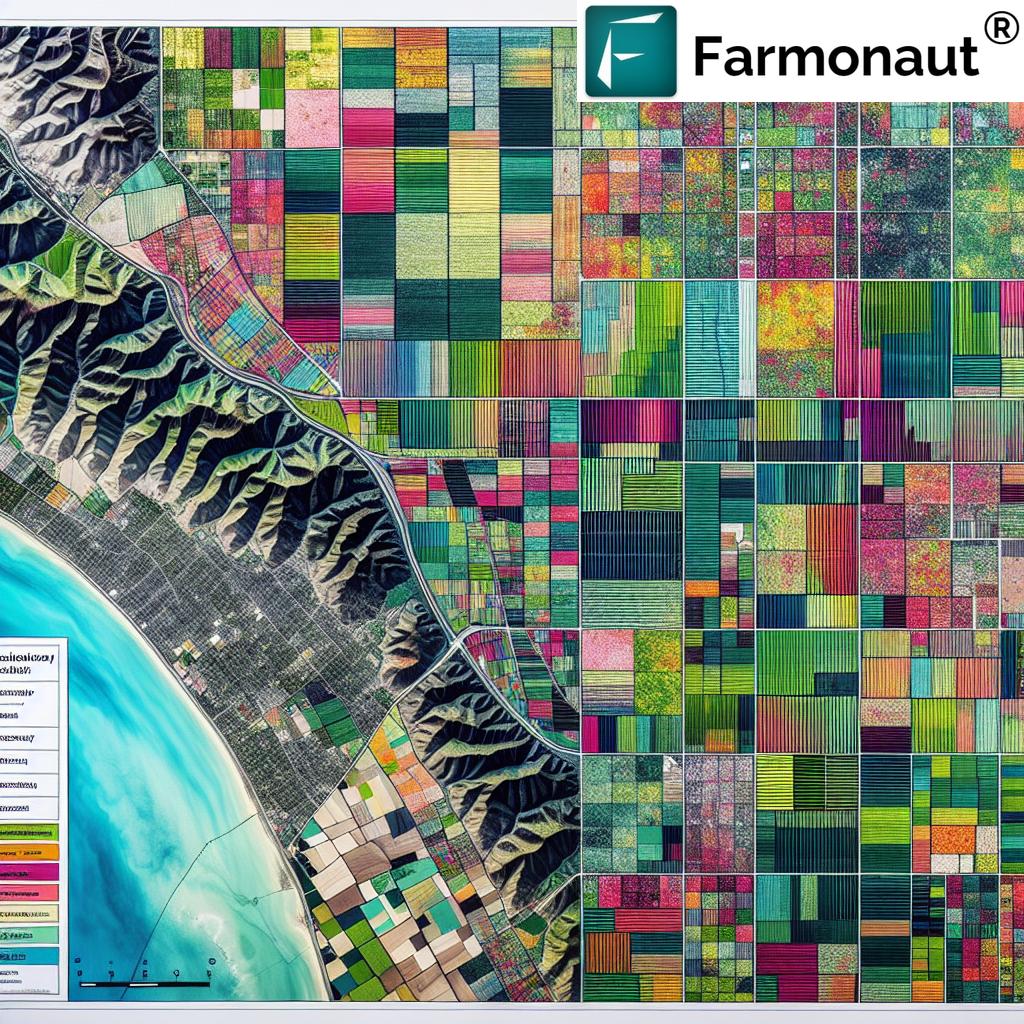Cupressus arizonica: Key to Arizona Sustainability – Unveiling Climate-Smart Forestry in 2025 and Beyond
“Cupressus arizonica can sequester up to 38 tons of CO₂ per hectare annually in arid landscapes.”
Introduction to Cupressus arizonica: Sustainability’s Evergreen Foundation in Arizona
Cupressus arizonica, commonly known as the Arizona cypress, has emerged as an integral tree species in forestry management for Arizona, the southwestern United States, and northern Mexico. This exceptional conifer is recognized for its adaptability, dense foliage, robust environmental contributions, and wide-ranging ecological benefits. As of 2025 and looking towards 2026 and beyond, Cupressus arizonica stands out for its importance in sustainable practices, especially with increasing focus on climate adaptation, ecosystem restoration, and combating land degradation.
The Cupressus arizonica contributes directly to dealing with critical sustainability challenges by:
- Stabilizing soils and slopes to reduce erosion and desertification
- Supporting carbon sequestration, thus reducing atmospheric CO₂ and aiding climate change mitigation
- Enriching local biodiversity, offering habitat and food to multiple native species
- Providing valuable timber for rural use due to its aromatic wood properties and resistance to decay
- Serving as windbreaks and shelterbelts across agricultural and rural infrastructure
In light of risks posed by climate variability and land use changes, Cupressus arizonica is more than just another tree; it is a cornerstone for climate-smart forestry and environmental management in arid and semi-arid lands like those found throughout Arizona and northern Mexico.
Botanical Characteristics and Native Habitat of Cupressus arizonica
Cupressus arizonica is a medium-sized, evergreen conifer with highly distinctive bluish-green, aromatic foliage that sets it apart within the cypress family. Here are its most noteworthy botanical characteristics:
- Height: Typically grows to 15-20 meters in height at full maturity
- Leaves: Possesses small, scale-like leaves offering dense canopy coverage
- Foliage: Its bluish-green color and aromatic quality provide ornamental appeal and help deter some pests naturally
- Bark: Features reddish to gray, fibrous bark, with distinct ridges that become furrowed in older trees
- Reproduction: Produces small, rounded cones containing seeds, shed periodically to colonize new habitats
This species thrives naturally in arid and semi-arid climates, adapting to diverse soil types but performing best in well-drained soils on rocky slopes and mountainous terrains of Arizona and neighboring regions in the southwestern United States and northern Mexico.
Adaptability, Growth, and Challenges in Native Landscapes
- Tolerates prolonged periods of drought, unlike many other conifers, due to deep root systems and efficient water use
- Its traits allow it to flourish amidst highly challenging landscapes with high erosion risk or limited moisture
- While it tolerates arid conditions and variable climate, it still requires some rainfall or irrigation to establish young plants
Geographic Distribution: Arizona, Southwestern United States, Northern Mexico
Native populations are commonly found:
- Throughout central and southern Arizona
- Scattered across New Mexico, western Texas, and Nevada (in the United States)
- Across the highlands and mountains of northern Mexico
Sustainable Forestry Management in Arizona and Beyond: The Role of Cupressus arizonica
The increasing urgency for climate adaptation and environmental resilience has placed Cupressus arizonica at the forefront of forestry management in Arizona, across the southwestern United States, and into northern Mexico. Here’s how this species is redefining sustainable forestry:
Afforestation and Reforestation Projects
- This tree plays a critical role in modern afforestation and reforestation projects, especially on degraded or marginal land
- Widely chosen for rehabilitation of areas prone to desertification and erosion
- Helps re-establish vegetative cover in regions hit by wildfires or historic overgrazing
- Its drought tolerance and soil stabilization capacity make it effective for combating land degradation
Commercial and Economic Benefits
- Although not the primary commercial timber source, Cupressus arizonica’s wood is still valued for local construction, fencing, and cabinetry
- Reduces pressure on more vulnerable native trees and fosters a diversified, resilient forestry sector
- Lower management input due to its natural disease resistance and aromatic wood properties
Sustainable Harvesting and Conservation Protocols (2025 & Beyond)
- Shift towards sustainable harvesting: only mature or selectively chosen trees are removed—native populations are preserved
- Replanting and rotation policies, using genetically diverse stock, help avoid monoculture vulnerabilities and maintain long-term biodiversity
- Modern forestry increasingly integrates satellite-based monitoring to track health, coverage, and growth—tools like those available from Farmonaut (read about our carbon footprinting solutions)
Soil Restoration, Erosion Control, and Desertification: Cupressus arizonica’s Essential Role
One of the most valuable contributions of Cupressus arizonica is its impact on soil and ecosystem stability in high-risk regions:
- Soil Stabilization: The tree’s root structure provides a powerful stabilization capacity, making it highly effective against erosion on slopes and in mountainous terrains
- Desertification Prevention: By colonizing arid landscapes where few other conifers will thrive, it acts as a barrier against encroaching dryness and land degradation
- Windbreak and Shelterbelt: Extensively used around agricultural fields and rural settlements, the dense foliage reduces wind speed, minimizing topsoil loss and protecting crops from damage
- Moisture Conservation: The shade and groundcover promote soil moisture retention—a vital factor for agricultural productivity in semi-arid regions
As of 2025, over 15,000 hectares in Arizona are being restored using Cupressus arizonica for ecosystem resilience.
“In 2025, over 15,000 hectares in Arizona are being restored using Cupressus arizonica for ecosystem resilience.”
Cupressus arizonica in Agricultural Contexts: Sustainability, Productivity, and Rural Infrastructure
Farmers and land managers across arid and semi-arid regions in Arizona and the broader southwestern United States are increasingly turning to Cupressus arizonica for its agricultural benefits:
- Windbreaks and Shelterbelts: These trees are extensively used around fields to protect crops from damaging winds, reduce evaporation, and preserve soil moisture
- Soil Health: Falling needles decompose slowly, adding to soil organic matter and providing small amounts of nutrients, particularly in otherwise nutrient-poor soils
- Crop Yield Support: Reduced wind and higher soil moisture mean farmers see indirect enhancements in productivity, especially critical during droughts and climate extremes
- Low Water Demand: Their relative drought tolerance makes them a sustainable choice for agricultural landscape modification in water-scarce regions
- Pest Management: Some evidence suggests that the tree’s aromatic foliage can reduce pest pressure along field margins compared to non-aromatic shelterbelts
For farmers seeking sustainable management methods amidst unpredictable climate variability, introducing Cupressus arizonica along field edges is an effective approach to mitigate the adverse effects of drought and wind erosion.
For advanced, real-time soil and crop monitoring, Farmonaut offers fleet and resource management tools supported by satellite imagery and AI, enabling you to manage resources and respond proactively to challenges across large landscapes.
Timber and Wood Utilization: Properties, Resistance, and Sustainable Practices
While Cupressus arizonica is not as commercially harvested as some other conifers in the region, it remains valuable as a local resource:
- Wood Properties: Known for its moderate hardness, fine grain, and resistance to decay, largely due to natural aromatic oils
- Applications: Used for rural construction, fencing, split rails, cabinetry, artisan crafts, and more
- Insect Resistance: Built-in pest resistance means less need for chemical treatments, supporting sustainable utilization of local timber resources
- Selective Harvesting: Forestry management agencies promote harvesting mature or diseased trees only, ensuring ecosystem integrity
As part of sustainable forestry initiatives for 2025–2026, balanced harvesting is coupled with active replanting and restorative management, particularly in areas with ongoing land degradation.
Biodiversity and Ecosystem Services: How Cupressus arizonica Contributes
In addition to its direct physical benefits, Cupressus arizonica provides critical ecosystem services that bolster native biodiversity:
- Wildlife Habitat: Its dense foliage and branching structure provide shelter and nesting sites for native birds, while its seeds serve as a food source for small mammals and insects
- Protecting Native Ecosystems: That’s particularly important in Arizona and northern Mexico, where frequent drought and encroachment by invasive species threaten wildlife populations
- Diversity Support: Helps buffer vulnerable plant and animal species from rapid climate-driven change
- Stabilizes Microclimates: Provides shade, influences local humidity, and protects more delicate plant species that grow beneath its canopy
Expanding Cupressus arizonica in mixed reforestation schemes ensures functional ecosystem resilience and a more diversified, healthy landscape in 2025 and 2026.
Climate Adaptation, Carbon, and Future Resilience Strategies With Cupressus arizonica
With global and regional climate change continuing to accelerate, Cupressus arizonica offers vital strategies for adaptation and mitigation:
- Carbon Sequestration: While a slower grower compared to some fast-growing plantation species, Arizona cypress’s long life and dense wood enable it to serve as a stable, valuable carbon sink
- Drought Resilience: Plays an increasing role in sustainable forestry management as drought periods lengthen in the southwestern United States
- Microclimate Moderation: Planting shelterbelts and mixed stands alongside agricultural fields improves local resilience by reducing temperature extremes, retaining moisture, and supporting more stable growing conditions
- Climate-Smart Strategy: Central to regional climate adaptation plans, especially in Arizona and northern Mexico
In conjunction with satellite data tracking—such as Farmonaut’s Carbon Footprinting Solutions—land managers and policymakers can model, monitor, and optimize carbon sequestration and ecosystem health.
Estimated Environmental Impact of Cupressus arizonica vs. Native Arizona Tree Species
| Tree Species | Estimated Annual Carbon Sequestration (kg/tree/year) | Drought Tolerance Rating (1–5) | Soil Stabilization Score (1–5) | Biodiversity Support Index (1–5) | Average Lifespan (years) |
|---|---|---|---|---|---|
| Cupressus arizonica | 22 | 5 | 5 | 4 | 170 |
| Ponderosa Pine (Pinus ponderosa) | 19 | 3 | 3 | 4 | 400 |
| Velvet Mesquite (Prosopis velutina) | 14 | 4 | 4 | 3 | 120 |
| Alligator Juniper (Juniperus deppeana) | 10 | 4 | 3 | 3 | 350 |
- Estimated Annual Carbon Sequestration: Higher is better for climate benefits
- Drought Tolerance: 1 (lowest) – 5 (highest)
- Soil Stabilization: 1 (lowest) – 5 (highest)
- Biodiversity Support: 1 (minimal impact) – 5 (extensive)
- Average Lifespan: Estimated years under optimal conditions
As shown above, Cupressus arizonica ranks among the best for drought tolerance and soil stabilization, making it invaluable for contemporary sustainable land management in dry regions.
Conservation, Risks, and Environmental Challenges in 2025 and Beyond
Despite its impressive adaptability, Cupressus arizonica faces modern challenges that require ongoing attention:
Disease and Pest Threats
- Cypress canker (caused by Seiridium spp. fungi) remains a primary risk, leading to branch and sometimes trunk dieback
- Outbreaks may become more severe with climate variability and warmer, drier conditions
- Monitoring and breeding for natural resistance are increasingly priorities in forestry management
Habitat Fragmentation and Land Use Pressure
- Expansion of urban areas and some agricultural conversion poses risk of habitat loss
- Maintaining corridors and mixed-use landscape designs helps preserve vital ecosystem connectivity
Climate Risks and Environmental Uncertainty
- Changing rainfall patterns and prolonged droughts could stress even drought-tolerant species without management intervention
- Innovative restoration and stewardship, with support from data-driven tools, will become more crucial as climate risk increases
Forest managers in Arizona and northern Mexico now emphasize disease-resistant planting stock, maintain biodiversity, and use landscape-scale monitoring to address these evolving challenges in 2025 and into 2026.
Farmonaut’s Satellite Support for Resilient Forestry and Environmental Management
As Farmonaut, we strive to make satellite-driven insights accessible and affordable for all—from small farmers to government agencies and corporate land managers investing in sustainable forestry and conservation projects.
- Satellite-based Monitoring: Our platform provides multispectral imagery to monitor tree health, estimate canopy coverage, and assess land degradation or restoration across large and small areas, delivering critical data for management decision-making.
(Large Scale Farm Management with Advanced Satellite Insights) - AI-based Advisory: We deliver actionable recommendations for tree planting, forest stewardship, and resource management tailored to emerging climate risks.
- Traceability & Transparency: Blockchain-backed traceability ensures every step of forestry production is transparent—protecting both business confidence and consumer trust.
- Carbon Footprint Calculations: Using our satellite data, we help land managers measure and improve carbon sequestration outcomes for projects using Cupressus arizonica and other species.
- API Integration: For developers and organizations seeking to embed satellite forestry data into proprietary apps or workflows, our API (Farmonaut API) is fully documented and ready for integration (API Developer Docs).
By empowering managers and policymakers with accessible, reliable satellite intelligence, our suite of products makes climate-smart forestry and sustainable land management more effective and scalable than ever before.
Frequently Asked Questions (FAQ): Cupressus arizonica and Sustainability in Arizona
What makes Cupressus arizonica a sustainable species for Arizona?
Cupressus arizonica is uniquely adapted to arid and semi-arid climates—common in Arizona. Its deep roots, high drought tolerance, efficient water use, and robust soil stabilization capabilities make it effective for combating erosion, desertification, and climate change-related impacts, ensuring long-term ecosystem resilience.
How does Cupressus arizonica contribute to carbon sequestration?
While not the fastest-growing tree, Arizona cypress sequesters around 22 kg of CO₂ per mature tree annually, and up to 38 tons/ha annually in dry landscapes. This makes it an important component of regional carbon mitigation and climate adaptation strategies, especially when managed in large restoration projects.
Is Cupressus arizonica important for biodiversity in the southwestern United States?
Yes, its dense aromatic foliage and seeds offer shelter and food resources for birds, insects, and small mammals. Planting it in mixed stands increases biodiversity support and resilience, protecting habitats threatened by development or invasive species.
What are the main challenges facing Cupressus arizonica in 2025 and beyond?
Primary challenges include susceptibility to cypress canker (Seiridium spp.), habitat fragmentation, shifting rainfall patterns, and prolonged droughts. Ongoing monitoring and adaptive forestry management, along with breeding for disease resistance, are essential to its long-term survival.
How can satellite technology help with Cupressus arizonica management?
Satellite solutions—like those provided by Farmonaut—enable land managers and foresters to monitor tree health, canopy coverage, and soil moisture, and to plan restoration and harvesting across landscapes. These tools promote faster, more data-driven decision-making and help ensure sustainable outcomes for planting programs.
Are there resources available for carbon footprinting and traceability of forestry products?
Yes, Farmonaut provides dedicated carbon footprinting solutions, as well as traceability tools for transparency in forestry and agriculture supply chains.
Conclusion: The Path Forward With Cupressus arizonica for Sustainable Forest Management
Cupressus arizonica is more than simply an evergreen tree of the Sonoran uplands—it has become an essential pillar for sustainable forestry, environmental conservation, and climate adaptation across Arizona, the southwestern United States, and northern Mexico in 2025 and far beyond. With its unmatched drought tolerance, soil stabilization prowess, and multi-layered ecological benefits, it embodies the strategies needed to face a changing climate and to restore the resilience of precious dryland ecosystems.
Both public agencies and private land stewards are increasingly investing in reforestation, restoration, and sustainable harvesting efforts centered around Cupressus arizonica—armed with modern monitoring platforms like those we provide at Farmonaut for satellite-driven insight and carbon assessment.
Ongoing research, stewardship, and collaborative management hold the promise of safeguarding this remarkable species so it can continue to provide valuable timber, reinforce habitats, and drive regional ecological recovery for generations to come.
Explore Farmonaut Subscription Plans for Advanced Forestry Monitoring
Further Reading & Resources
- Carbon Footprinting Solutions – For climate-conscious forestry and agriculture.
- Blockchain Traceability for Products – Secure end-to-end supply chain transparency in forestry and farming.
- Fleet Management Tools – Track forestry and agricultural equipment in real time.
- Agro Admin App – Ideal for managing large plantations, restoration projects, and multi-site forestry operations.
- Farmonaut API – Integrate satellite-based forestry monitoring into your workflow. See the Developer Docs for details.
Summary: Cupressus arizonica – A Pillar for Sustainable Forestry and Environmental Stewardship in 2025 and Beyond
Cupressus arizonica stands as an integral species within forestry and environmental management, especially in Arizona and similar arid regions. Its profound importance lies in its adaptability, drought tolerance, ability to sequester carbon, resistance to disease, and multi-faceted support for biodiversity and soil health. By integrating satellite technologies and data-driven management practices, land stewards can unlock even greater benefits from this exceptional species—charting a course for climate-smart landscapes in 2026 and the decades ahead.















